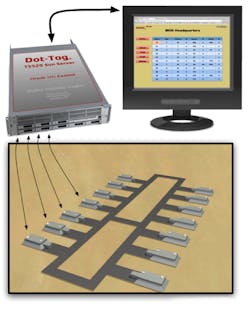Radio-frequency-identification (RFID) tags are widely used for inventory and identification chores. But in some environments, such as around explosives, an RF signal might trigger an unwanted reaction. Another identification solution is needed for these cases, and it is turning out to be one based on magnetism: RuBee. Also known as the IEEE 1902.1 standard, RuBee uses totally passive tags and base stations that emit magnetic energy at very low levels. It has proven its worth around explosives and weapons inventory.
One company, Visible Assets, has made a business of licensing RuBee base stations and tags for hazardous environments, such as around weapons and explosives. The US Navy has already certified the use of RuBee for Hazards of Electromagnetic Radiation to Ordnance (HERO) applications involving sensitive explosive devices. The RuBee base stations operate at about 0.131 MHz with only 40 nW of transmitted energy. For more, click here.
About the Author
Jack Browne
Technical Contributor
Jack Browne, Technical Contributor, has worked in technical publishing for over 30 years. He managed the content and production of three technical journals while at the American Institute of Physics, including Medical Physics and the Journal of Vacuum Science & Technology. He has been a Publisher and Editor for Penton Media, started the firm’s Wireless Symposium & Exhibition trade show in 1993, and currently serves as Technical Contributor for that company's Microwaves & RF magazine. Browne, who holds a BS in Mathematics from City College of New York and BA degrees in English and Philosophy from Fordham University, is a member of the IEEE.
